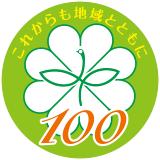Introduction of local welfare committee and children's committee
Updated: October 1, 2024
What are welfare commissioners, child welfare commissioners, and chief child welfare commissioners?
Welfare commissioners are part-time local government officials appointed by the Minister of Health, Labour and Welfare under the Welfare Commissioner Act.
Each welfare officer is assigned a specific area of responsibility and works in the areas closest to citizens.
In addition, welfare commissioners also serve as child welfare commissioners as defined by the Child Welfare Act.
The chief child welfare commissioner is appointed from among the child welfare commissioners who have specialized knowledge and experience related to children.
They are unpaid, volunteer-based staff and serve a three-year term.
Recommendation and commissioning of welfare commissioners and children's commissioners
People who meet the requirements stipulated in the Social Welfare Commissioner Act, such as those of high character and insight, who are broadly informed about the current state of society, and who are enthusiastic about promoting social welfare, are recommended to the prefectural governor by the Social Welfare Commissioner Recommendation Committee established in the city, town, or village. The prefectural governor then recommends them to the Minister of Health, Labour and Welfare after hearing the opinion of the Local Social Welfare Council established in the prefecture, and the Minister of Health, Labour and Welfare then commissions them.
History of the Welfare Commissioner/Children's Commissioner system
The origins of the welfare commissioner system are said to date back to May 1917, when Okayama Prefecture Governor Shinichi Kasai promulgated the "Regulations for the Establishment of Social Welfare Advisors," which were modeled after the "poor relief commissioner system" implemented in the city of Elberfeld in Germany, and the system was born. The year 2017 marked the 100th anniversary of the founding of the welfare commissioner system.
In Tokyo, the Tokyo Prefecture Charity Association was established under the direction of then Tokyo Governor Inoue Tomoichi in February 1917. The Tokyo Prefecture Charity Association established the Relief Committee System in June of the following year, 1918, and divided Tokyo Prefecture into 14 districts, surveyed local conditions, and offered advice to poor families.
This "Tokyo Prefectural Charity Association Relief Committee" is the origin of Tokyo's welfare commissioners, and in 2018, Tokyo marked the 100th anniversary of the birth of the welfare commissioner system (relief committee system).
Symbol mark of the 100th anniversary of the welfare committee and children's committee
The National Federation of Welfare Commissioners and Children's Commissioners has created the "100th Anniversary of Welfare Commissioners and Children's Commissioners" symbol mark shown on the left.
The green circle surrounding the quatrefoil made of hearts, which is the symbol of the Civil Welfare Committee, represents the lives and growth of people and the region, and the orange letter ``100'', which represents 100 years of history, represents kindness and contact. doing.
The catchphrase ``Continue working with the local community'' reflects the aspirations of the welfare and children's committee members to continue working together with the local community, based on our 100-year history of working with the local community.

Symbol mark of the 100th anniversary of the welfare committee and children's committee
About the activities of civil welfare and children's committee cooperation members
The Tokyo Metropolitan Government has established a Civil Welfare/Children's Committee Cooperator. In cooperation with local welfare committees and children's committees, we conduct surveys on looking after the elderly, and conduct morning greeting campaigns at elementary and junior high schools. We also discover citizens who need support and provide information to local welfare and children's committees.
In Inagi City, two civil welfare and children's committee members are currently working.

Tokyo Metropolitan Children's Welfare Committee character "Mingy"
Adobe Acrobat Reader DC (formerly Adobe Reader) is required to open PDF files.
If you don't have it, you can download it for free from Adobe.
![]() Download Adobe Acrobat Reader DC
Download Adobe Acrobat Reader DC
Inquiries regarding this page
Inagi City Welfare Department Life Welfare Division
2111 Higashinagumanuma, Inagi City, Tokyo
Phone: 042-378-2111 Fax: 042-377-4781







